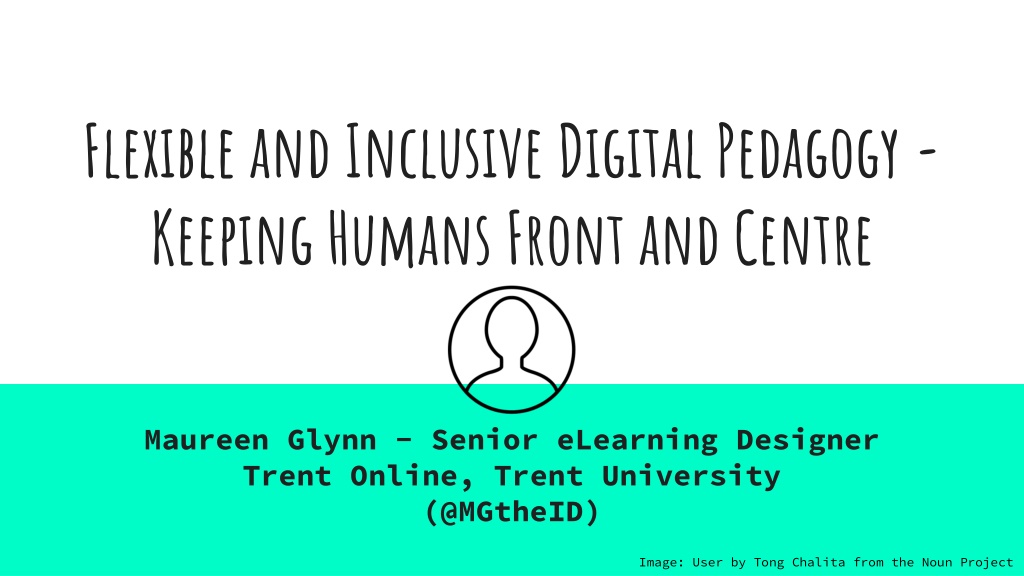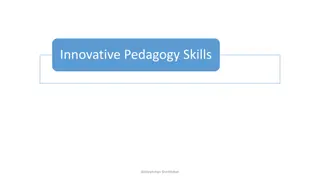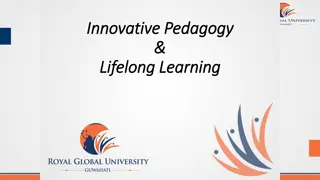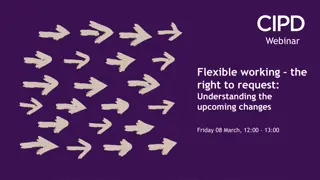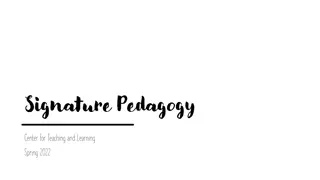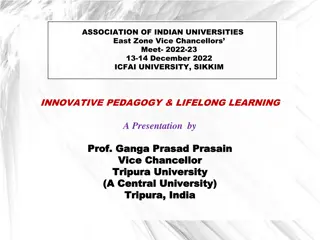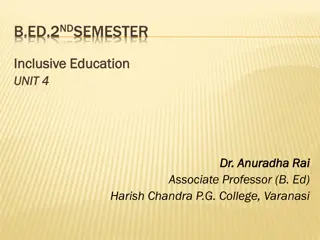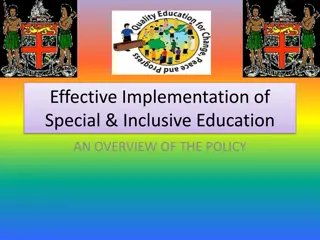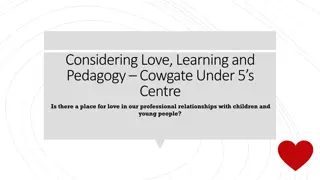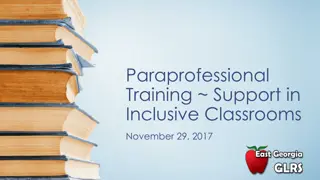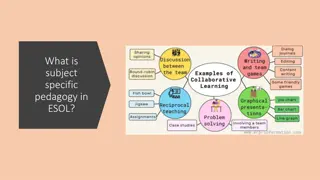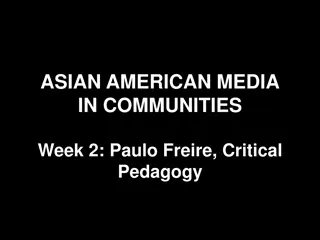Flexible and Inclusive Digital Pedagogy: Prioritizing Humans in Education
Embracing flexible and inclusive digital pedagogy is crucial in today's educational landscape. Maureen Glynn, a Senior eLearning Designer at Trent University, emphasizes the importance of keeping humans at the forefront of teaching and learning. The shift towards accommodating diverse student needs and overcoming new barriers to learning underscores the necessity for universal design in higher education. Integrating trust, belonging, and a focus on human experience can enhance course design and promote a supportive learning environment for all.
Download Presentation

Please find below an Image/Link to download the presentation.
The content on the website is provided AS IS for your information and personal use only. It may not be sold, licensed, or shared on other websites without obtaining consent from the author. Download presentation by click this link. If you encounter any issues during the download, it is possible that the publisher has removed the file from their server.
E N D
Presentation Transcript
Flexible and Inclusive Digital Pedagogy - Keeping Humans Front and Centre Maureen Glynn - Senior eLearning Designer Trent Online, Trent University (@MGtheID) Image: User by Tong Chalita from the Noun Project
Where were headed.. Who am I and why am I here? Work Worth Doing - Why Flexible and Inclusive Pedagogy? A quick trip around your course(s) Q & A
Who Am I and Why Am I here? Instructional Designer Open Education Fellow Barrier-Free Design Specialist
Work Worth Doing -Why Flexible and Inclusive Pedagogy? Continuing trend of annual increases in the number of students requiring academic accommodation for disabilities (Those who report requirements) Evolving profile of typical undergrad student Recent and ongoing new barriers to learning - The environment has dealt us all a disabling condition. 1 ...a commitment to provide the best experience for all who come here. (King s University College, 2015) 1Why Universal Design for Learning Is Essential to Higher Education s New Normal - An edited & expanded excerpt from Tobin & Behling, Reach Everyone, Teach Everyone: Universal Design for Learning in Higher Education (West Virginia University Press, 2018).
A Trip through your Course -With A new Lens? A course involves humans in numerous roles: The group of humans in a course is not a homogeneous one. Each member of the group can be and will ideally be both teachers and learners at various points in the course. Taking into account the interests, safety and dignity of all, as part of the course design, will yield the best possible outcomes. TRUST BELONGING lEARNING Trent Online (2018). Online Course Design for Humans - A Workbook.
Access and Entry Points Requirements to gain access? (administrative, academic, technological, financial, others) The entry points (first lesson, first materials, first thing learners will hear from you?) What role do you take on at the entry point to your course and how is your voice included? What role will learners have and how will their voice be included? How might you support the interests, safety and dignity of those (including yourself) who are accessing/entering? Syllabus tour Learner snapshot survey Lines of communication/terms of engagement?
wAYFINDING tHROUGHOUT THE cOURSE What kind and form of information (i.e. documents, activities, tools) will help learners to recognize signposts (i.e. paths that are ending, changing, intersecting, diverging) as they make their way through your course? How might you plan/design the paths through your course to support the interests, safety and dignity of those (including yourself) who are progressing through them? Course site tour? Intentional design vs file repository Make the tacit explicit, ask yourself so what ? Structure, headings, bridges Cross referencing and redundant design
spaces/times and their Purposes In what spaces (virtual or physical) and at or across what times will you, in your role as educator, communicate, connect and/or gather with the learners in your course? How might you plan/design for these times and spaces in a way that supports the interests, safety and dignity of those (including yourself) who occupy them? Strategic use of synchronous vs asynchronous options Flexible options for participation Cameras optional Model and clarify guidelines for respectful interactions Recognize and account for the range of other times and spaces where learners might gather and communicate and/or reflect independently for your course
Materials and tools What materials and tools will you share and/or employ to support learners in successfully completing their work and travels through your course? How might you ensure that these materials and tools do not prejudice the rights, aspirations, or potential for success of any of those (including yourself) in the course? Open and affordable options Representation of a diversity of voices and viewpoints Accessible formats (text alternatives for images, audio) Page counts, run times
Exits and Departures from the course Where and how do you wish learners to exit your course? How will you communicate this vision to the learners? What do you wish learners to take with them as they depart -- whenever and wherever in the course that might be? Choice/flexibility in assessment formats, course milestones, submission policies Rubrics, examples, time to reflect on feedback Invitation to provide feedback Opportunities for reflection
